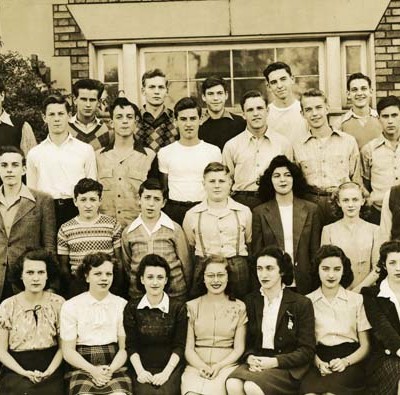
Clairton, Pa. is a city in Allegheny County. It was a sparsely populated area until the Carnegie Steel Company built a steel mill and coke plant in the early 1900s. Under the ownership of the U.S. Steel Corporation, the Clairton plant became one of the largest of its kind in the world. Clairton was incorporated as a borough in 1903 and became a third-class city in 1922, when it merged with the nearby Wilson and North Clairton.
The first Jewish settlers in Clairton arrived shortly after the mill was built. They organized Congregation B’nai Abraham Anshe Sfard around 1903 and incorporated the Orthodox congregation in 1908. Charter members were David Krill, Abraham Recht, Max Recht, Morris Recht, Sam Recht and Bernet B. Samuels. In 1918, the congregation purchased and renovated a former Presbyterian church at First Street (now Reed Street) and Waddell Avenue at a cost of $10,000, according to an article in the Pittsburgh Daily Post. To accommodate the tradition of facing Jerusalem during prayer, the ark was placed at the east-facing front entrance and worshipers entered the building through the kitchen.
The Jewish population of Clairton grew through the 1930s and rapidly declined from the 1940s. Even at its peak, many families also maintained membership in congregations in nearby McKeesport, Pa., presumably for religious school and cemetery privileges. A portion of the Tree of Life-Sfard section of Elrod Cemetery contains many Clairton burials, likely reflecting some of the shared Galitzianer ties between the two communities.
The Jewish communities of Clairton and nearby Elizabeth partnered on a B’nai B’rith lodge, a Hadassah chapter and an intermittent religious school in the 1940s.
Despite its small membership, Congregation B’nai Abraham Anshe Sfard employed a spiritual leader, Rabbi Jacob Friedman, throughout most of the 1930s.
The total population of Clairton peaked in the 1950s and declined rapidly after U.S. Steel discontinued steelmaking operations at the plant in 1962. By the early 1970s, Congregation B’nai Abraham Anshe Sfard was no longer holding regular services. The four remaining members—Leonard Chotiner, Norman Ilkuvitz, Herman Silberblatt and Max Zweibel—liquidated the assets of the congregation in 1979 and 1980 and donated the proceeds to Hillel Academy, Yeshiva Achei T’mimim, and the Kollel Jewish Learning Center. The former synagogue building was later demolished.
| Type | Year | Population | Source |
|---|---|---|---|
| Jewish population [Clairton] | 1918 | 12 members | Clairton Synagogue Dedicated Yesterday," Pittsburgh Daily Post, March 11, 1918 |
| Jewish population [Clairton] | 1937 | 230 | American Jewish Yearbook, Vol. 42 [1940-1941] |
| Jewish population [Clairton] | 1951 | 120 | American Jewish Yearbook, Vol. 52 [1951] |
| Total population [Clairton] | 1910 | 3,326 | U.S. Census via Wikipedia |
| Total population [Clairton] | 1920 | 6,264 | U.S. Census via Wikipedia |
| Total population [Clairton] | 1930 | 15,291 | U.S. Census via Wikipedia |
| Total population [Clairton] | 1940 | 16,381 | U.S. Census via Wikipedia |
| Total population [Clairton] | 1950 | 19,652 | U.S. Census via Wikipedia |
| Total population [Clairton] | 1960 | 18,389 | U.S. Census via Wikipedia |
| Total population [Clairton] | 1970 | 15,051 | U.S. Census via Wikipedia |
| Total population [Clairton] | 1980 | 12,188 | U.S. Census via Wikipedia |
| Total population [Clairton] | 1990 | 9,656 | U.S. Census via Wikipedia |
| Total population [Clairton] | 2000 | 8,491 | U.S. Census via Wikipedia |
| Total population [Clairton] | 2010 | 6,796 | U.S. Census via Wikipedia |
| Total population [Clairton] | 2020 | 6,181 | U.S. Census via Wikipedia |
Families associated with the Jewish community of Clairton include: Amster, Berkovitz, Chottiner, Ilkuvitz, Recht, Samuels, Silberblatt, Spodek, Teper, Tepper, Wise, and Zweibel.